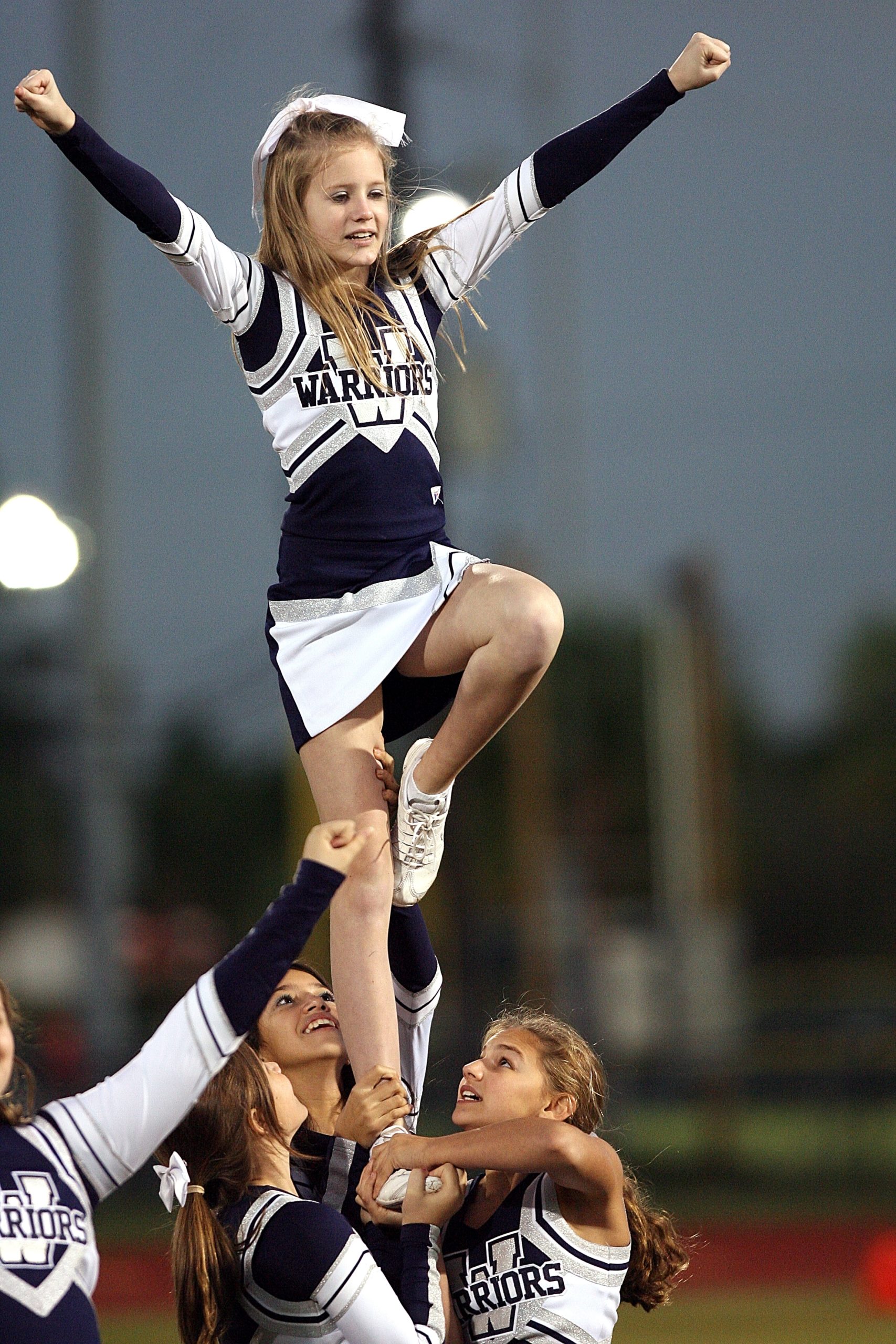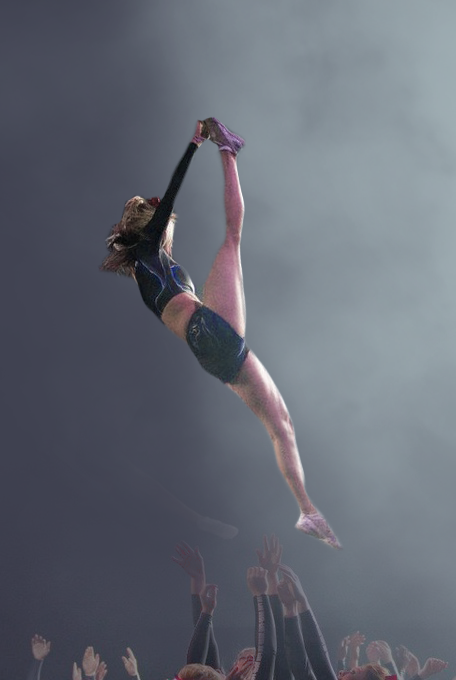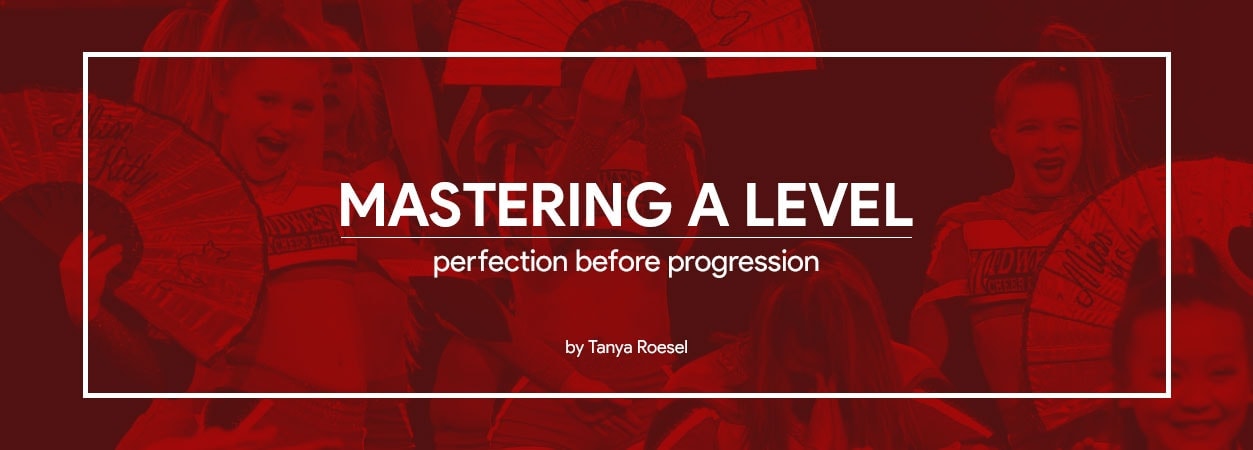
By Tanya Roesel
Published September 16, 2019
MASTERING A LEVEL - PERFECTION BEFORE PROGRESSION
Tryouts are over and teams are placed.
Although there is an objective standard to justify each athlete’s placement, you are still burdened with the task of explaining why a certain athlete was placed on a certain leveled team. Despite clear definitions of what is requires at each level of cheer (levels 1-7) some parents and athletes still question your decision(s). The following will help to explain to parents just why their child was placed on a specific team. It all comes down to mastering a level. Perfection before progression.
When being evaluated for a team, the question that you need to ask is…. has my child “mastered” the level?
Is my child at the high end of that level, therefore being able to fully participate in every aspect of a routine? Yes, there will be exceptions, such as a “monster” back spot that is needed for a higher level stunt to go up…. or a amazing flyer that is needed for an elite stunt… but those are few and far between. Has your child mastered the level?

LEVEL 1
Most level 1 elite athletes are working back handsprings, but they have mastered the level one skills… they have beautiful back walkovers, front walkovers, they could be the first pass or the last pass. They can now concentrate on perfecting their jumps, but can be 100% a successful part of a level 1, 2 1/2 minute routine!

LEVEL 2
A level 2 athlete is working tucks… as they have “mastered” the standing BHS and the Round off BHS. They are fully a part of the routine and even have their moments to shine.
LEVEL 3
A level 3 athlete many times is working layouts, but has mastered not just the round-off handspring tuck, but beautiful standing series BHS, a punch front and an aerial.
LEVEL 4
Level 4 athletes are many times twisting in classes while throwing a hollow body, technically beautiful layout, a solid standing tuck and again, are capable of doing any part of a true level 4 routine.
LEVEL 5
Level 5 athletes are working higher, more elite twisting skills, can nail a jump to back with their feet together and the straight fulls they will throw in the routine are technically gorgeous.
LEVEL 6
And the new Level 6 athlete… these are the athletes throwing doubles, trick thru to full, standing full, jump to back and are the true elite of the elite.
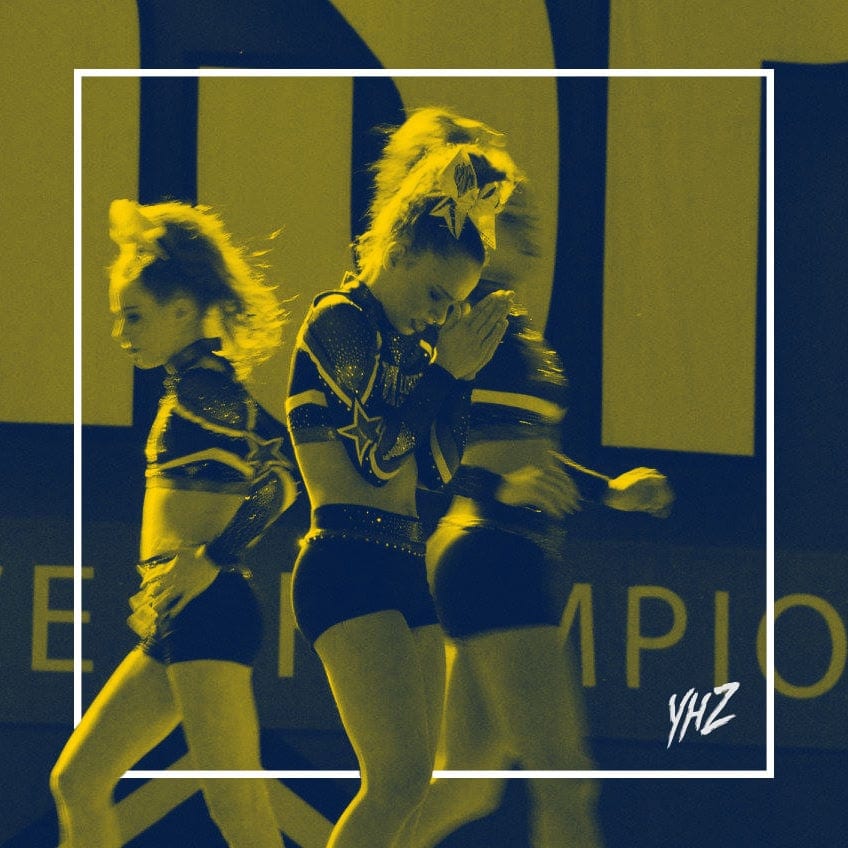
Look at it this way… if you have not mastered a level, why put the stress on an athlete to attempt to do tumbling skills at a level they have not mastered and then be expected to stunt, jump and dance for a full 2 1/2 minutes? Why not allow them the year to be the shining star, to build their confidence and feel a full part of not only the routine, but the team?
There will be always be exceptions to the rule, but again, those are few and far between. As coaches and parents, we have to look at the bigger picture. Yes, we want to challenge the athlete, but we also want to consider what that challenge is and how it will impact them. 99% of the athletes I ask, would you want to be on a team where you are 100% involved and the shining star or are you okay going up a level where you may not be in the tumbling pass or jump section, but you will stunt… they say they want to be on the team they can 100% involved in. They want that moment…
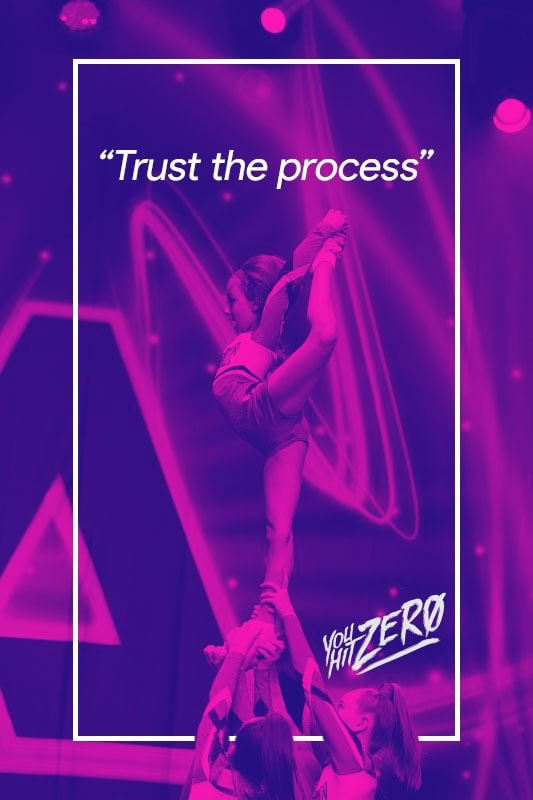
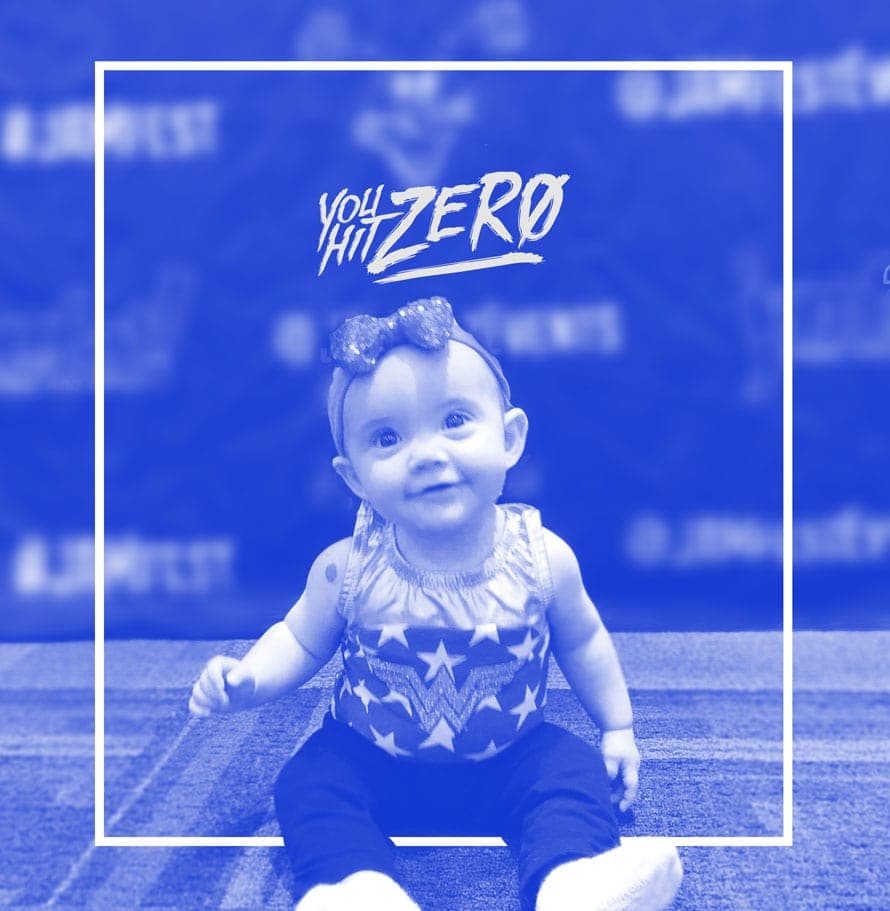
Trust the process… you don’t have to agree with the process, but at least trust it. I have never had a true level athlete quit, but I cannot count the number of athletes who quit because they were simply on the wrong level and were stressed out by it. This sport is hard enough but if it’s not fun, if it’s not challenging but at the same time building confidence, then your child will not continue.





